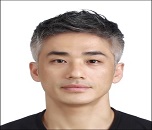
Eun-Tae Jo
Member of Korea Pain Dignosis Society
Title: Biomechanical approach related to meridians and myofascias: Biomechanical acupuncture
Biography
Biography: Eun-Tae Jo
Abstract
Biomechanical acupuncture originated from the biomechanical approach of treating musculoskeletal pains by Myofascial concepts of Western medicine and Meridian concepts of Traditional Chinese Medicine (TCM). There have been various attempts to treat musculoskeletal pains with needle stimulations around the East and the West. But practical point of views, most practitioners agree upon the difficulties in choosing exact treatment points. In this paper, a new concept of Biomechanical acupuncture is proposed to solve the difficulties, which is simple and easy to apply to everyday practice but enough to integrate modern myofascial concepts and traditional meridian concepts. In the basis of Biomechanical acupuncture, Myofascial concepts don’t mean trigger points but biomechanical network of anatomical myofascia. And Acupuncture points in TCM related to 12 Meridian theories are to be used in the treatment of musculoskeletal pains. Owing to ceaseless connection of the whole myofascia, a disorder in one region may be expressed in the form of pain and limitation on certain movement in other part of body mainly in the same myofascial tension line by biomechanical dysfunction. As a result, a cause of biomechanical dysfunction gets to be enlarged. Repeated stresses transcending the limited range give rise to a local inflammation or a pain. Biomechanical acupuncture doesn’t cure and heal anything. All it does set body back to normal so that healing process begins.

